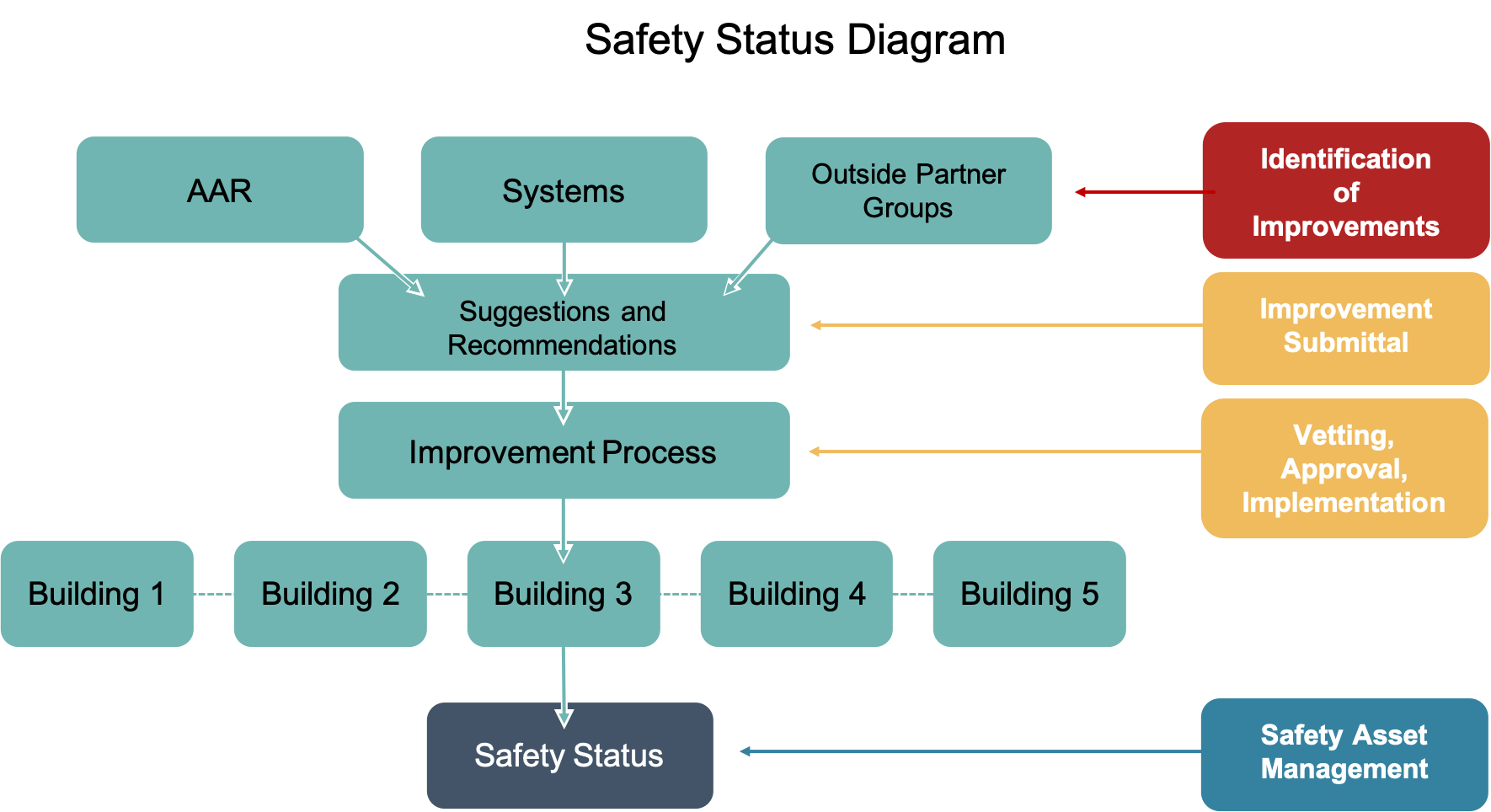In our last blog, we discussed asset management and what an asset was. This week we will discuss After Action Reviews and how they drive much of what we do in relation to asset management and process improvement. What we are really talking about is making our schools, our buildings, and our organizations, as a whole better. But just as importantly, we are protecting our students, staff, and organizations from threats that may wish to harm them.
The After-Action Reviews (AAR), the process improvement process, and the Safety Asset Management System (SAMS) all work together to achieve the same goal; making us as safe as we possibly can and establishing a strong safety culture within your organization to show a continuous improvement in safety programs and how safe you are at any given time. Now let’s look at how the AAR, the SAMS, and the improvement process all work together to protect your schools and organizations.
The purpose of an AAR is to look at a single event, incident, training and/or exercise to determine how well all of the components worked and how well everything worked together. If there were some component, practice, policy, or someone that wasn’t working as expected or designed, this would be the opportunity to identify that component and take corrective action. During this evaluation, we take a look at what was done correctly, what were the opportunities for improvement or correction, and what steps we are going to take to make those improvements. Determine if the area that needs attention falls under one of these areas: policy, training, or system. Assign the corrective action to someone who is responsible for the appropriate category to ensure it is addressed properly.
As with every other process we have discussed, this should be a continuous process and corrective actions should be initiated as soon as possible. If there is a corrective action that can’t be corrected in a timely manner, you need to establish a process to track the progress of these actions and a process to report when they have been completed. Trust me on this. You will want to document all the steps that were taken to make improvements and any corrective actions that were taken.
The purpose of the improvement process is to carefully evaluate all identified recommendations, ensuring that they are thoroughly vetted to guarantee their effectiveness in enhancing your processes and creating a safer environment for your schools or organizations; there is a process to track the progress of the improvement; and to ensure there is a proper implementation of that improvement. While this process will take many of its suggestions and recommendations from the AAR process, they can come from many other sources as well: parent organizations, casual observations, other review processes, safety committee meetings, school district administration and school board meetings, first responders and other community partners, etc. The point here is that the improvement process should look at all suggestions and recommendations, determine which ones should be adopted, then track and document the progress and implementation of those recommendations and improvements.
As discussed in our last blog, the SAMS should help you manage all of your safety assets. Remember that an asset is any system, item, process, mandate you add, or should have added to your ecosystem that enhances the safety of your school or organization. If managed correctly, your SAMS should provide you with an up-to-date status of the safety of your buildings, individually, and collectively as a district. If you find something within your AAR or your improvement process that significantly impacts your overall safety, then that should help you determine the status of that particular asset and/or building. However, if the identified item impacts several schools, such as a policy, then that would likely impact the safety of the entire district. From a district perspective, SAMS should also help district safety managers determine the safety status (how safe or compliant an individual building is) of all of the schools they are responsible for. The SAMS should also provide data to determine the priorities of issues that need to be addressed.
The diagram below shows how we collect data through the AARs, Systems monitoring, and other outside groups (PTA, First Responders, School Boards, Community partners, etc.). Then comments, suggestions, and recommendations are gathered and subjected to the improvement process. Those responsible for the improvements vet, approve, and implement the accepted recommendations. As part of the implementation process, the school buildings are made aware of the improvements and implemented at the building level. Through the SAMS process at the district and school levels, the safety status is updated and monitored regularly to ensure that all the buildings are compliant and those which have safety issues are addressed in a timely manner.














No Comments Yet
Let us know what you think